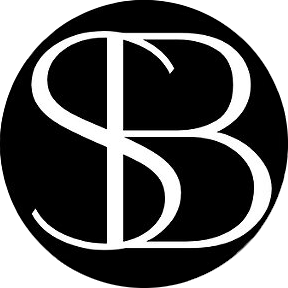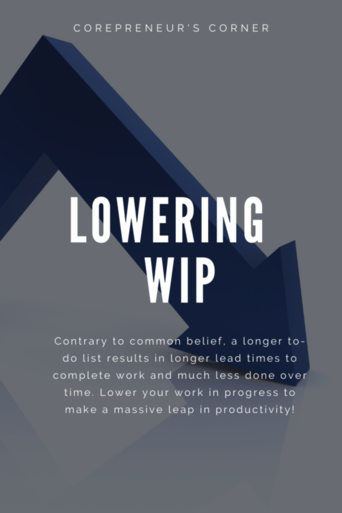[To watch the video, click here.]
Let’s talk about something that I see over and over again in businesses: teams who are really struggling with the amount of work that they have on their plates.
Now as a people leader, one of the many responsibilities that you have is to really champion your team and the work that they’re doing, and to make sure that the work that they’re doing is of tremendous value, and that they’re actually able to do it within a workday ideally.
As a coach, one of the things that’s really hard for me to watch is for team members to leave their jobs because they are in meetings all day long and feel that more work is dropped on them and know that when they get home, they’re going to be logging back in to do their actual work, and also potentially on the weekend as well.
I think we would all be on the same page here that this is not ideal. It’s unhealthy, it’s not sustainable, and there are many other reasons why it’s not an ideal situation. I won’t go into that, but instead, I’ll go straight into what I feel as a leader you need to do about it.
The first thing that I’d like you to do, is get your team together and say something like:
“I know that we’re all working on a whole bunch of different things right now. I know that that’s not an ideal situation for us as a team, and I think we really need to do something about it. I have an idea, I’d like to share it with you, and I want to get your thoughts.”
Then I would like you to propose to your team that all work be visualized.
Now you may get some different reactions here. You may get some people feeling like it might feel a little intrusive. On the other end of the spectrum, you may get some people feeling really excited about this idea because they’re really going to want to show you how much stuff they actually have on their plate.
At the end of the day, please let your whole team know that this is not a competition. This is not about one person has two things, the other person has 30. This is about, as a team, in totality, what are all the things that are consuming time?
The first step toward visualizing your work would be then to ask your team to take an inventory of all the different tasks and work items that every individual has on their plate.
Once each individual has done this, then what I’d like you to do is either physically (if you’re physically sitting together in an office environment) or virtually (in an electronic format) create four columns. These four columns are going to be labeled:
- Backlog
- Next (or) To-Do
- In progress
- Done.
If you are a team who has not visualized work in the past, this is a very simple way just to lean into it.
Now let’s talk a little bit about what these columns should contain:
- Backlog is going to contain the items that your team hasn’t touched yet. It’s everything that’s on their radar but they haven’t started.
- To Do would be the items that they haven’t started but they have prioritized.
- In Progress is the stuff that is already started.
- Done is done. They have checked that off their list.
The next step is to get your team to plot their work according to those four columns. One thing you should decide up front is some way to differentiate ‘who is working on what’.
One way that I would do this as a coach is to use different colored stickies. I would recommend you ask your team how they would like to represent their work visually as you want them involved in all steps in this process.
Another way I have done this is by creating little fun avatars. They could be of whatever. Superheroes, different kinds of smiley faces, whatever the case is. Find some fun creative way to identify who is working on what.
Next, as the leader, meet your team members one-on-one in front of this work visualization system. When you meet with person A ask them to walk you through the work that they have represented on the board. This is important for you to do because (1) it shows an interest in what your team(s) are doing and (2) it really helps to provide you with a deeper level of understanding.
As you’re doing this, one of the things that I’d like you to do is to ask whether the tasks are still relevant. Some may be obviously relevant, but for some others, you may want to understand the value that the tasks are bringing to the organization. For example: if one of the tasks is a report that they are generating weekly, ask your team member if they feel there is still value in continuing to run it. Who is receiving the report? What are they doing with it? Do the recipients still need it on that same frequency? With your teammate, dig in a little bit on those individual tasks and eliminate wasteful ones.
This is an important conversation for you because over time, certain tasks just become habit. It becomes habit to perform them, and it becomes habit for others to receive; and it takes someone to sort of intercept to ask if it’s still necessary.
Once you’ve had this conversation with every member of your team, what I like you to do is update the board with all of the changes that you’ve made.
Then look at the in progress column and understand how much is actually sitting there.
What I want you to do is try to limit the number of work items per person in the ‘In Progress’ column to 1, maybe 2 for each team member. For everything else, I want you to kick it back into ‘Next (or) To Do’.
Before you start moving items there is a prioritization conversation that has to happen. This conversation needs to happen collectively as a team. I won’t go into prioritization and prioritization techniques at this point. I’d rather you have an organic conversation and qualitatively determine priority.
Review the board on a regular cadence.
You’re going to be reviewing your team board at least on a weekly basis, in order to prioritize continually, review any new items that have hit your backlog, and provide assistance to items that are hung up in the workflow.
You’ll start to see a few additional benefits to this:
- Because everything is visual and you’ll be reviewing the board on a weekly or daily basis with your team, your team will naturally become more collaborative.
- The top, most important items will be dealt with first. in absence of visual work representation, it is harder to sift through the mound of work and surface out the pieces that should be top priority.
- Your team will experience the gratification of actually completing tasks and crossing them off their list faster, and fulfillment from having completed their work in order of priority.
To learn about other benefits that come out of visualizing your work with a Kanban, check out this blog.
Thank you for taking the time to read this post! Now…GO SHOW THEM WHAT YOU’RE MADE OF!
If you are a new or emerging leader, check out how The Masterclass can help you supercharge your career and positively impact your organization and those around you.


